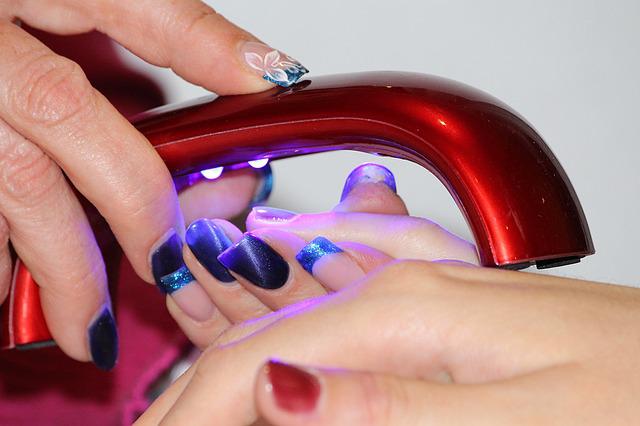You've probably noticed that acetone-free removers take a bit longer to dissolve that stubborn nail polish. It's not just you – it's the gentler solvents at work, which need a little more time to break down the polish's components. But what exactly is going on here? Is it just the solvent, or are other factors like polish type, nail condition, and remover temperature also playing a role? As you wait for what feels like an eternity for your polish to come off, you might wonder: what's the trade-off between speed and gentleness, and is it worth it?
Understanding Acetone-Free Remover Ingredients
You'll find that most acetone-free removers rely on a combination of solvents, such as ethyl lactate, ethyl acetate, or propylene carbonate, which work together to break down and dissolve nail polish. These solvents are generally gentler on your nails and skin than acetone, but they can still be effective at removing polish. When you use an acetone-free remover, you'll notice that it takes a bit longer to work than an acetone-based one. This is because the solvents in acetone-free removers are slower-acting and need more time to penetrate and break down the polish.
The combination of solvents in acetone-free removers can vary depending on the brand and type of remover you're using. Some removers may also include additional ingredients, such as moisturizers or plant extracts, to help nourish and hydrate your nails and skin. When shopping for an acetone-free remover, you'll want to read the ingredient list carefully to confirm that you're getting a product that meets your needs. By understanding the ingredients in your acetone-free remover, you'll be better equipped to use it effectively and get the results you want.
Nail Polish Removal Techniques
Mastering the right technique is crucial when using acetone-free removers, as they require a bit more patience and finesse to effectively break down and remove nail polish. You’ll want to start by prepping your nails, gently pushing back your cuticles and removing any oils or lotions from your nails and surrounding skin. Next, you’ll apply the remover to a cotton pad or swab, making sure to fully saturate it. Once you have the saturated cotton pad ready, press it firmly against your nail and hold it there for about 10-15 seconds to allow the remover to penetrate the polish. After this brief wait, gently wipe the polish away, and repeat if necessary until your nails are completely clean. Additionally, for those who enjoy a bit of flair, experimenting with highlighter shades for different skin tones can add a fun touch to your overall look after your nails are polished and prepped.
You'll then place the pad or swab onto your nail, wrapping it around your finger to hold it in place. Let it sit for about 10-15 minutes, allowing the remover to penetrate and break down the polish. Gently press the pad or swab onto the nail, working from the cuticle to the tip of the nail, to help loosen the polish. Repeat this process a few times, and you should be able to easily wipe away the polish. Be patient and gentle, as acetone-free removers can take a bit longer to work their magic.
Role of Solvents in Removal
As you've likely noticed when using acetone-free removers, the type and quality of solvents play a significant role in how effectively the polish is broken down and removed. You see, solvents help dissolve the polish, allowing it to be lifted off the nail. In acetone-free removers, these solvents are typically gentler and less aggressive than acetone. That's why selecting a remover with high-quality solvents that can efficiently break down the polish is crucial.
You might be wondering what makes a solvent effective in removal. It all comes down to the solvent's ability to dissolve and break down the polish's components. Some solvents are better at this than others, which is why some acetone-free removers work faster and more efficiently than others. When using an acetone-free remover, you want to look for solvents like ethyl lactate, butyl acetate, or propylene carbonate, which are known for their ability to effectively break down polish. By choosing a remover with the right solvents, you can guarantee a faster and more efficient removal process.
Factors Affecting Removal Time
Removal time for acetone-free removers hinges on several key factors that can make all the difference in how quickly and easily the polish comes off. You'll find that the thickness of the polish plays a significant role in removal time. Thicker coats take longer to dissolve and break down, while thinner coats come off more quickly. The type of polish you're using is also a factor. Some polishes are designed to be more resistant to removers, making them harder to take off.
The condition of your nails is another factor that affects removal time. If your nails are weak or brittle, you may need to use a gentler remover, which can take longer to work. On the other hand, if your nails are healthy and strong, you can use a more aggressive remover, which will speed up the process. Additionally, the temperature of the remover can also impact removal time. Warm removers tend to work faster than cold ones. By considering these factors, you can adjust your removal technique to get the best results.
Alternatives to Acetone-Free Removers
If acetone-free removers aren't working for you, or if you're looking for other options, you can consider alternatives that still offer a gentler approach to removing nail polish. You might want to try using lemon juice or vinegar to break down the polish. Simply soak a cotton pad with the liquid and place it on your nail. Let it sit for a few minutes before gently scrubbing off the polish. Another option is to use a mixture of baking soda and water to create a paste. Apply the paste to your nail and let it sit for a few minutes before rinsing off with warm water.
You can also consider using an oil-based remover, such as olive oil or coconut oil, which can help dissolve the polish without stripping your nails of their natural moisture. These alternatives might take a bit longer to work, but they can be just as effective as acetone-free removers. Plus, they're often gentler on your nails and cuticles.
Optimizing Removal With Prep Steps
To maximize the effectiveness of your nail polish remover, you'll want to prepare your nails properly beforehand by gently pushing back your cuticles, washing your hands, and removing any oils or lotions from your nails. This is because oils and lotions can interfere with the remover's ability to dissolve and lift the polish, resulting in a longer and more tedious removal process.
Also, gently buff the surface of your nails to roughen up the polish and create some texture for the remover to penetrate more easily. While it may seem counterproductive to add an extra step to the process, properly preparing your nails can dramatically speed up the removal of old polish.
It makes a big difference if acetone-free removers (that typically take a tad bit longer than other, conventional products) have already an additional challenge from previous layers of polish to worry about.
At a Glance
You now know why acetone-free removers take longer to remove nail polish. The gentler solvents need more time to break down the polish's components. You can optimize removal by prepping your nails and using the right techniques. While acetone-free removers may require patience, they're gentler on your nails and skin, making them a worthwhile choice if you prioritize nail health. With a little practice, you'll be pro at using acetone-free removers in no time.






